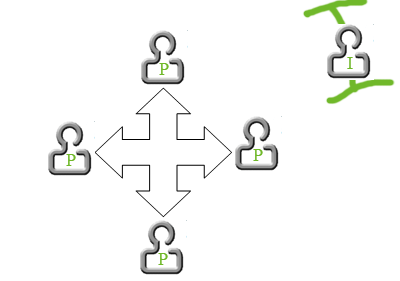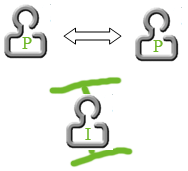David Morgan’s Two-Person Interviews (TPIs)
mkoole, · Categories: Identity, PhD Studies, Research · Tags: focus groups, interviews, methods, one-person interviews, phenomenography, qualitative interviews, two-person interviewsPresentation at Thinking Qualitatively Workshop Series offered through the International Institute for Qualitative Methodology. (June 22, 2011)
At first glance, this idea does not seem altogether that new. Yet, to my knowledge, no one other than Dr. David Morgan, a sociologist at Portland State University [oops! I thought he was from the U of A!] has conceptualized and named this form of interview format. Dr. Morgan acknowledged that other authors have mentioned “micro groups” and “mini-groups”, but there is not much in the literature. Please post a comment if you have seen any literature about this kind of interview.
To understand it, I will first outline the similarities and differences with regular one-person interviews and focus groups. This will be grossly simplified, but it allows a point of departure for an examination of TPIs.
One-person interviews
In a conventional one-to-one interview, the interviewer communicates with a participant.
Focus group
In a focus group, the interviewer facilitates a conversation. But, the participants then carry on, sometimes forgetting about the presence of the interviewer. Focus groups allow a researcher to accomplish at least two things: 1) ask questions, and 2) observe interactions among focus group members.
Two-person interviews (TPIs)
TPIs represent a hybrid of the focus group configuration. Naturally, the number of participants is more limited which reduces the logistics problems of gathering four to six people (or more) together for a meeting. TPIs also allow the interviewer to observe the interactions between the two participants. As such, one of the main goals is to encourage a conversation between the two participants.
According to his presentation, each time you add another person to the interview setting, you add additional complexity. In a dyadic situation, the participants exchange views bi-directionally. If a researcher adds an additional conversant (triad), there is a possibility for three separate conversations. The conversation can split.
Dr. Morgan illustrated how time is (possibly) shared within the three configurations above:
| Interview time | Configuration | Time | Data |
| 1 hour session | One-person | 1 hour for the participant | Questions answered; one perspectiveObservation of individual only |
| 1 hour session | TPI | 30 minutes each | Questions answered; two possible perspectivesObservation of interaction |
| 1 hour session | Focus group (6 people) | 10 minutes each | Questions answered; six possible perspectivesObservation of interaction |
Next, I will write about some of the interesting issues that Dr. Morgan mentioned including: heterogeneous groups, homogeneous groups, under- and over-disclosure, interview structure, relationships and rapport, and backchannels. And, I will discuss how this might help my phenomenographic study.
See more on TPIs: http://kooleady.ca/thoughts/?p=647


